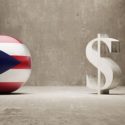Congress makes all official decisions about Puerto Rico. By law, Congress is allowed to treat Puerto Rico differently from the states, and that usually means giving more to states than to Puerto Rico. Courts have decided that Puerto Rico can be given less than states, as long as there is a rational explanation for those differences. Her4e’s something surprising: one of the most common explanations for the differences is that Puerto Rico is just too expensive.
We don’t hear that Mississippi or New Mexico cost too much so Congress won’t give them any more funds. We can imagine what their senators would say if Congress tried to do that. But it happens to Puerto Rico regularly.
Inequality in Puerto Rico
Every state, Washington D.C., and two territories participate in the SNAP program, commonly known as food stamps. The federal government pays for a percentage of the cost of this program. Funds for food stamps increase when there is greater need.
In Puerto Rico, there is a block grant for the NAP program, which is the comparable food stamps program in the territory. Recipients of NAP get about half as much as those in the states, and the eligibility cutoff for income is lower.
Puerto Rico was originally included in the food stamps program and then in SNAP. However, “concerned about the size, expense, and management of the food stamp program,” Congress replaced the food stamp program with the block grant. This phrase from a Government Accountability Office report makes it clear that Congress wanted to save money. Funding for the NAP program began at about 75% of the funding for Puerto Rico’s SNAP program.
Medicaid also is covered with a block grant which does not change based on need. While states saw much more funding during the pandemic, Puerto Rico’s block grant stayed the same. The percentage of healthcare costs covered for a state with Puerto Rico’s average per capita income would be 83% but Puerto Rico receives just 55% matching.
In the past few years, Puerto Rico has received additional emergency funding in the wake of Hurricane Maria and a series of earthquakes, as well as the COVID-19 pandemic. However, these stopgap measures don’t make up for the ongoing underfunding. It is not possible for Puerto Rico to negotiate contracts effectively when it relies on temporary emergency fixes.
Puerto Rico isn’t covered by SSI, the Social Security income for people are poor, elderly, and disabled. That program provides $533 per month, while the comparable program in Puerto Rico allows just $77. This discrepancy is being examined by the Supreme Court right now, after the United States explained that extending SSI to Puerto Rico would cost too much.
These are just a few examples. The government has admitted repeatedly that it provides less funding for Puerto Rico because, with a population larger than almost half the states and double the poverty rate of the poorest states, Puerto Rico would cost more than Congress wants to pay if the residents got the same benefits as people living in the states.
What does Puerto Rico cost the federal government?
Is Puerto Rico actually a major expense for the federal government? Let’s look at the data.
In the chart below we see the net per capita expenditure for seven states, plus Puerto Rico, in 2004. That is, how much did the federal government spend on that state, per person, after subtracting the taxes paid by that state?
- Alaska: $8,005
- New Mexico: $7,348
- Virginia: $5,940
- West Virginia: $5,562
- North Dakota: $5,517
- Montan: $4,792
- Mississippi: $4,700
- Puerto Rico: $2,823
Clearly, Puerto Rico is not particularly expensive. If Puerto Rico received the same benefits that states do, it would cost more.
Would equality be too expensive?
It doesn’t really matter how much it would cost the U.S. government to treat Puerto Rico equally. Equality, justice, and fairness are the American way; these are values shared by Americans in general, and we expect them of our government.
As a state, Puerto Rico will be treated equally with the current 50 states. There could be extra costs for the federal government in the short run.
But as a state, Puerto Rico will be more prosperous than it is as a territory. This has been true of every territory which has become a state. There will be greater investment in Puerto Rico. A level playing field will benefit the Island’s entrepreneurs. Puerto Rico will not lose money on tax tricks. The result will be greater benefits for the United States as well as for Puerto Rico.
Let your representatives know that you support Puerto Rico Statehood, and that you want them to do the same.








No responses yet